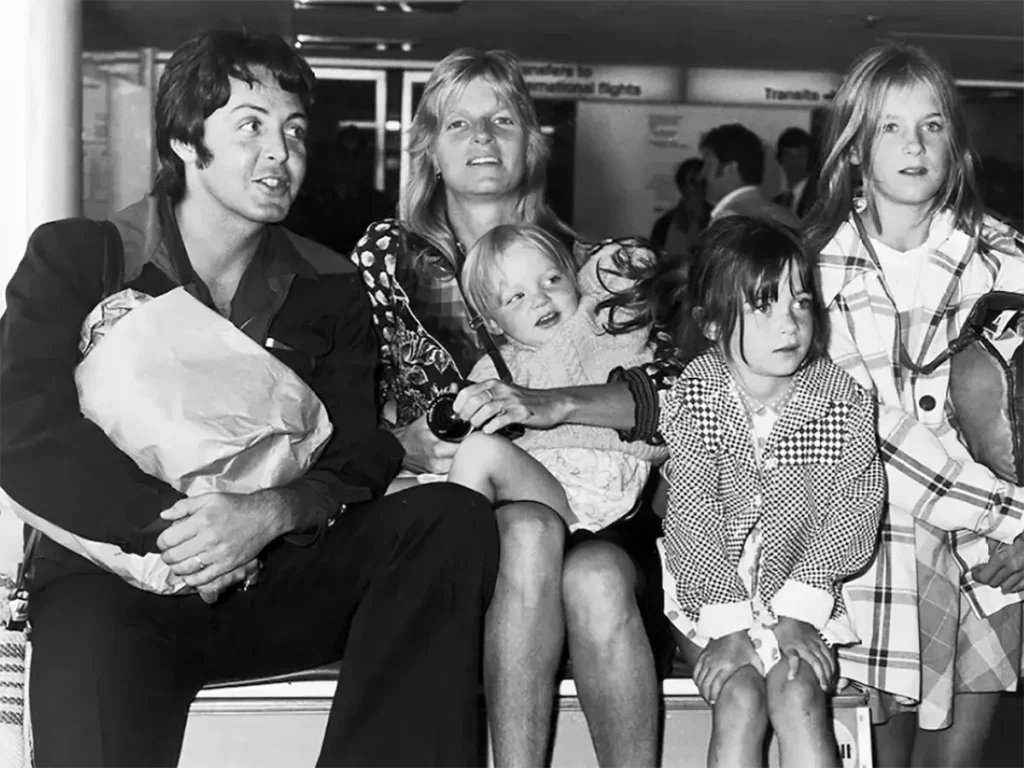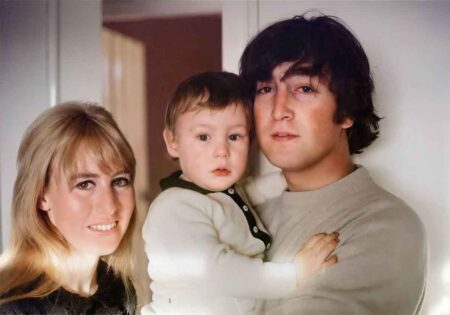Paul McCartney sells eternal devotion for a living. From early Beatles ballads to solo tear-jerkers, he has spent decades convincing the world that love conquers everything.
Offstage, the story is messier: overlapping girlfriends, a disputed paternity case, a divorce that cost him a fortune, and wives who became hate figures for his own fans. Put bluntly, McCartney’s love life is where the ‘nice Beatle’ image collides with real human appetite.
To understand him, you have to follow the women – and the scandals – that shaped both the music and the myth.
Beatlemania made his love life everyone’s business
The Beatles were not just a band; they were a global emotional event. As commentators have pointed out, Beatlemania blended genuine musical innovation with an almost religious hysteria that turned four young men into untouchable icons.
That hysteria had consequences. Millions of mostly teenage girls felt they ‘owned’ Paul, the cute, apparently gentle one. Any real-life girlfriend threatened that fantasy, which meant every woman on his arm walked into a crossfire of projection, jealousy and tabloid spin.
McCartney’s lovers at a glance
| Years | Partner | Status | Key drama | Impact on image |
|---|---|---|---|---|
| 1959-1962 | Dot Rhone | Liverpool girlfriend | Teen pregnancy and miscarriage while he was playing Hamburg clubs | Private at the time, later showed how early he blurred the line between romance and freedom |
| 1963-1968 | Jane Asher | Actress fiancée | He kept sleeping with other women; she reportedly found him in bed with someone else and dumped him on live TV | Shattered the “perfect couple” fantasy for fans who had invested in Paul-and-Jane |
| Mid 1960s | Peggy Lipton | US actress fling | Brief affair while he still had a steady girlfriend in England | Revealed in her memoir, it underlined how casual he could be with women’s feelings |
| Early 1960s onward | Erika Hubers (alleged) | Hamburg waitress | Long paternity dispute over her daughter Bettina; McCartney denied being the father | Fed tabloid ‘secret Beatle baby’ headlines that clashed with his later family-man image |
| 1968-1998 | Linda Eastman/McCartney | First wife | Vilified as the American divorcee who ‘stole’ Paul and helped end the Beatles | Ultimately cemented his reputation as a devoted husband and father |
| 1999-2008 | Heather Mills | Second wife | Toxic, highly public divorce with abuse allegations he denied and a huge payout | Bruised his saintly image and reminded fans he was capable of messy choices |
| 2007-present | Nancy Shevell | Third wife | Quiet, scandal-free relationship so far | Restored a sense of calm and normality in his later years |
Dot Rhone: the first serious girlfriend
Before the screaming stadiums, there was Dorothy ‘Dot’ Rhone in Liverpool. McCartney met her as a teenager, and by 1960 she was pregnant; he even bought her a ring in Hamburg and they planned to marry before she tragically miscarried, according to accounts of his early personal relationships.
Biographers note that even then he was hedging his bets, admitting later that he slept with other women in Hamburg – often strippers – while Dot waited at home. That pattern of wanting the security of a steady girlfriend while sampling the perks of fame would haunt his more famous relationships.
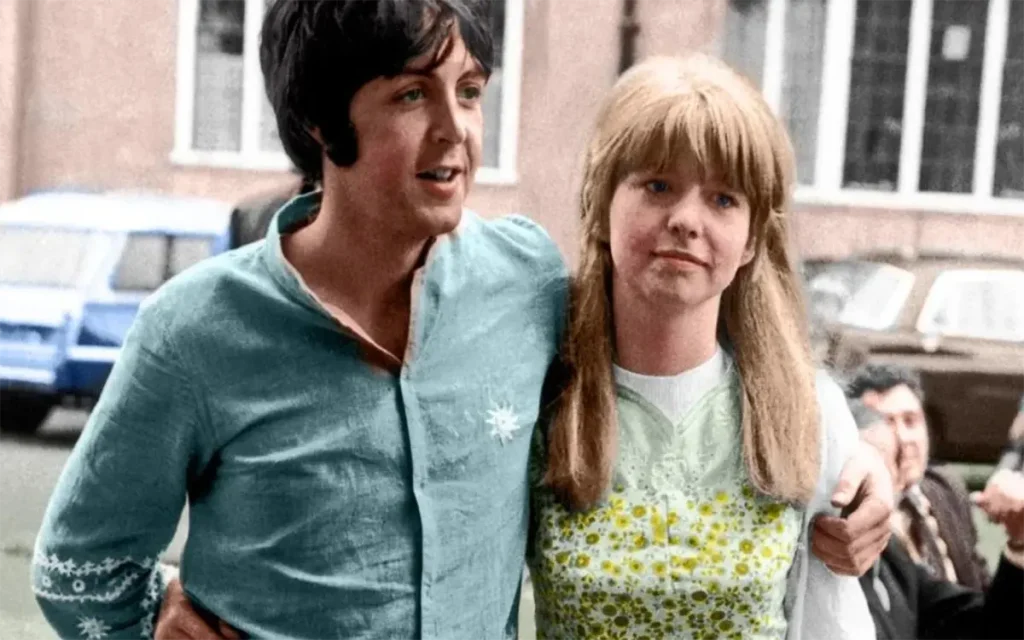
Jane Asher: muse, fiancée, and public humiliation
In 1963 McCartney met actress Jane Asher at the Royal Albert Hall and soon moved into her parents’ elegant Wimpole Street home. There he wrote some of his most romantic early songs; he later said that the Beatles ballad And I Love Her was inspired directly by Jane and first played in her family’s upstairs drawing room.
Asher became both girlfriend and creative muse, the redheaded actress who seemed to complete the image of McCartney as a cultured, respectable young man. Songs like You Won’t See Me, I’m Looking Through You and For No One charted the cracks in their relationship in real time, long before fans realised how deep those cracks ran.
On Christmas Day 1967 the couple announced their engagement, only for it to implode months later. Beatles chroniclers report that Asher returned from a theatre job in Bristol to find McCartney in bed with another woman, after years in which he had treated sleeping with groupies as acceptable because they were not yet married.
He tried to patch things up, but she was having none of it. In July 1968 Asher went on BBC television and calmly informed the nation that their engagement was broken off, finished, a brutal piece of live-TV honesty that told fans exactly who had been doing the betraying, as later retellings of McCartney’s love life have noted.
The damage went beyond one broken engagement. For many older fans, discovering that the man who wrote some of the era’s tenderest love songs had been cheating on the very woman who inspired them felt like a slap in the face. The gap between the poet of fidelity and the young man behaving like any other randy rock star was suddenly impossible to ignore.
Peggy Lipton and the revolving door of the mid-60s
Jane Asher was not the only woman in McCartney’s life during those years. American actress and future Mod Squad star Peggy Lipton later wrote about a brief affair with Paul, starting when she was a 17 year old fan in Los Angeles and resurfacing when the Beatles toured the US again.
In her memoir she describes the fantasy-come-true of going upstairs with him after a party, then realising with a shock that to him she was just another girl in a long line. By 1968 she flew out, thinking they might rekindle things, only to be devastated when she saw Paul dashing out of a Beverly Hills bungalow with photographer Linda Eastman – the woman he would soon marry.
Lipton’s story is hardly unique, but it is unusually well documented and brutally honest. It makes clear that by the late 60s McCartney was juggling multiple women across continents, even as the public narrative still painted him as the ‘nice’ Beatle who would eventually settle down with Jane.
The Hamburg paternity saga that would not die
While Beatlemania raged, a much quieter drama was unfolding in Germany. Berlin woman Bettina Hubers (later Krischbin) has long claimed that McCartney is her father, the result of an early 60s affair with her mother Erika when the Beatles were playing Hamburg; her family pursued maintenance claims against him and in 1966 he agreed to pay a lump sum settlement without admitting paternity, according to reports on the long-running paternity dispute.
When Bettina turned 18, fresh lawsuits sought both ongoing support and formal recognition. McCartney supplied a blood sample that, according to reports, excluded him as the father, but for a time a Berlin court still ordered maintenance until his lawyers successfully appealed. Decades later Bettina alleged that a lookalike had taken the original test, prompting prosecutors to open a fraud inquiry before dropping it without charges, citing the statute of limitations and leaving the whole saga legally unresolved.
McCartney has always denied being Bettina’s father and has said he barely remembers, if at all, encountering Erika in Hamburg. Still, the idea of a ‘secret Beatle baby’ proved irresistible to tabloids and sat uneasily alongside his later reinvention as rock’s model family man.

Linda Eastman: the New York divorcee fans loved to hate
McCartney met American photographer Linda Eastman in a London club in May 1967 while he was still with Jane Asher, then reconnected with her in New York the following year and invited her to London. Within months he had broken it off with Asher, Linda was pregnant, and on 12 March 1969 they married in a low key civil ceremony at Marylebone Town Hall.
For Linda, the price of being the one was brutal. Biographer Bill Harry records that female fans scrawled insults like ugly and worse over the walls outside Paul’s London home, played loud radios all night and yelled that he should have married Jane instead, turning his newlywed life into a siege, as described in his encyclopedia entry on Linda McCartney.
McCartney has since acknowledged that many in Britain resented his choice. Looking back, he complained that people, in his words, did not like him giving up on Jane Asher, and that they disapproved of his marrying Linda, a New York divorcee with a child, even though that was exactly who he wanted; later coverage of his marriage to Nancy Shevell often contrasts this backlash with the acceptance of his third wife.
Over time, of course, Paul and Linda became one of rock’s most admired couples, raising children, retreating to a Scottish farm, and spending very little time apart until her death from cancer in 1998. That long, apparently monogamous marriage, along with love songs like My Love, helped launder his earlier behaviour and harden the later myth of McCartney as pop’s ultimate family man.
It was not only inside his own marriage that this side of him showed. Accounts of his quiet support for Cynthia and Julian Lennon after John walked out – visiting, sending money, helping Julian into the music world – reveal a man who could be fiercely loyal to families once he chose to commit.
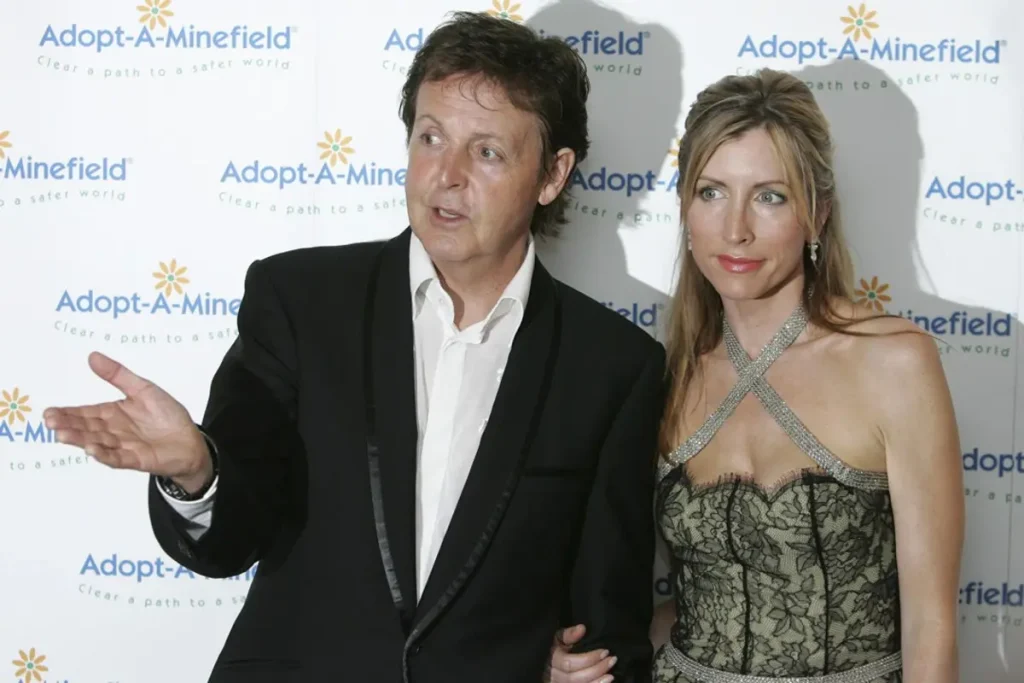
Heather Mills: the divorce that shattered the halo
After Linda’s death, McCartney eventually began a relationship with former model and anti-landmines campaigner Heather Mills. They married in 2002, had a daughter, Beatrice, in 2003, separated in 2006 and, after one of the ugliest celebrity divorces in recent memory, he was ordered to pay her around £24.3 million, roughly $52 million at the time, according to reports on the record-breaking settlement.
In leaked divorce documents and subsequent press coverage, Mills accused McCartney of repeated drunken rages and physical violence, including claims that he poured wine over her, pushed her and once cut her with a broken wine glass; his camp flatly denied the allegations, and he vowed to contest them in court.
At the same time Mills went on television saying she had received death threats, that she was being called a monster and gold digger, and that McCartney had failed to protect her and their child from media abuse, comparing her treatment to that of vilified women like Princess Diana and Kate McCann, in a widely covered TV interview.
When Mr Justice Bennett finally issued his judgment, it was devastating for Mills. He described much of her evidence as ‘make-believe’, said she had been ‘inconsistent and inaccurate’ and explicitly contrasted that with McCartney’s evidence, which he called balanced, consistent and honest in the official divorce ruling.
For fans, the effect was stark. Whatever private ugliness may have gone on in that marriage, the legal record painted Mills as manipulative and unreliable, while McCartney emerged as the wounded yet dignified ex who had overpaid to make the circus stop. The scandal cost him tens of millions, but in the court of public opinion it largely reinforced his image as a basically decent man with catastrophically bad taste in second wives.
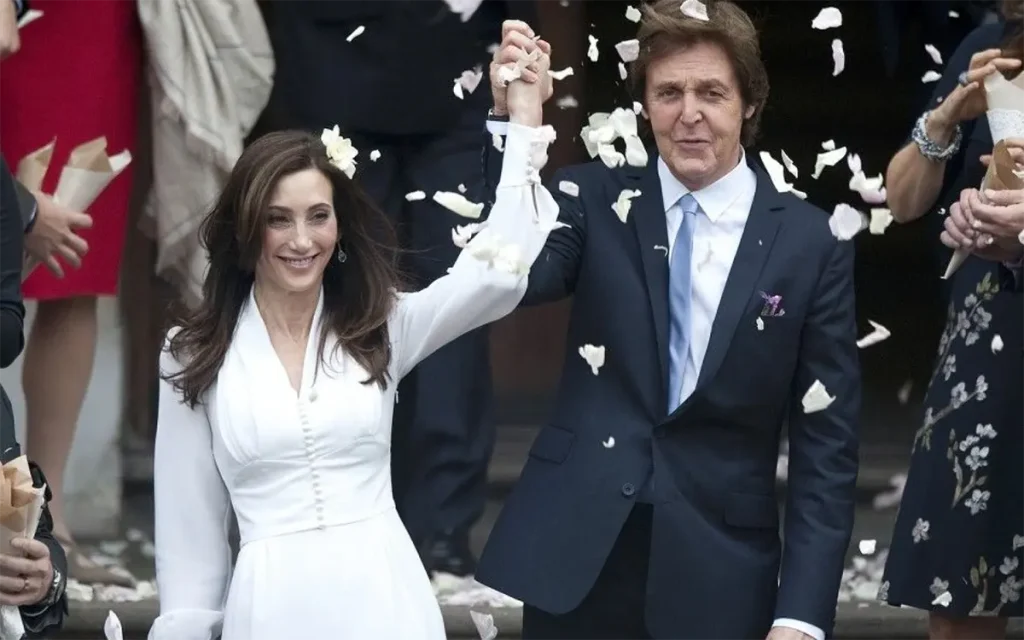
Nancy Shevell: late-life calm after the storms
In 2007 McCartney began seeing American businesswoman Nancy Shevell, whom he had known socially for years in the Hamptons. They married in 2011 in another modest Marylebone Town Hall ceremony, and by their 14th anniversary he was publicly calling her his ‘lovely missus’ while describing their home life as cooking together, watching television and reading like any other couple, as he told People magazine.
Shevell is wealthy in her own right and keeps a low profile, which has blunted the gold digger narrative that savaged Mills. For once, most of the drama around a McCartney relationship has stayed where it belongs: inside the marriage, not on the front pages.
What his lovers reveal about Paul McCartney
Looked at in sequence, McCartney’s love life tells a story very different from the one in his songs. In his teens and twenties he wanted everything at once – the comfort of a fiancée waiting at home, a harem of groupies on tour, discreet flings with starlets, and the adoration of millions of fans who expected him never to choose anyone but them.
The Hamburg paternity battle and the Heather Mills divorce show how expensive that gap between image and reality can become once lawyers and tabloids get involved. Meanwhile, the hostility aimed at Jane Asher, Linda McCartney and Heather Mills says a lot about fandom’s willingness to blame women for choices McCartney himself made.
Yet it is also true that, once he finally committed, he became almost obsessively domestic, building a tight family unit with Linda and later seeking stability again with Nancy. The same man who could casually devastate a lovestruck teenager like Peggy Lipton also quietly nurtured Cynthia and Julian Lennon and now dotes on his grandchildren.
For listeners who grew up on Beatles records, that tension is uncomfortable but revealing. The poet of love was also, for a long time, a selfish young man with too much opportunity and not enough impulse control – in other words, a very human rock star. If anything, accepting that contradiction makes the tender songs hit harder: they are not the statements of a saint, but the aspirations of someone who had to learn loyalty the hard way.
For older fans who lived through Beatlemania, revisiting McCartney’s lovers is a reminder that the soundtrack of an era came from flawed people making flawed choices. The romance was real – so were the casualties.

